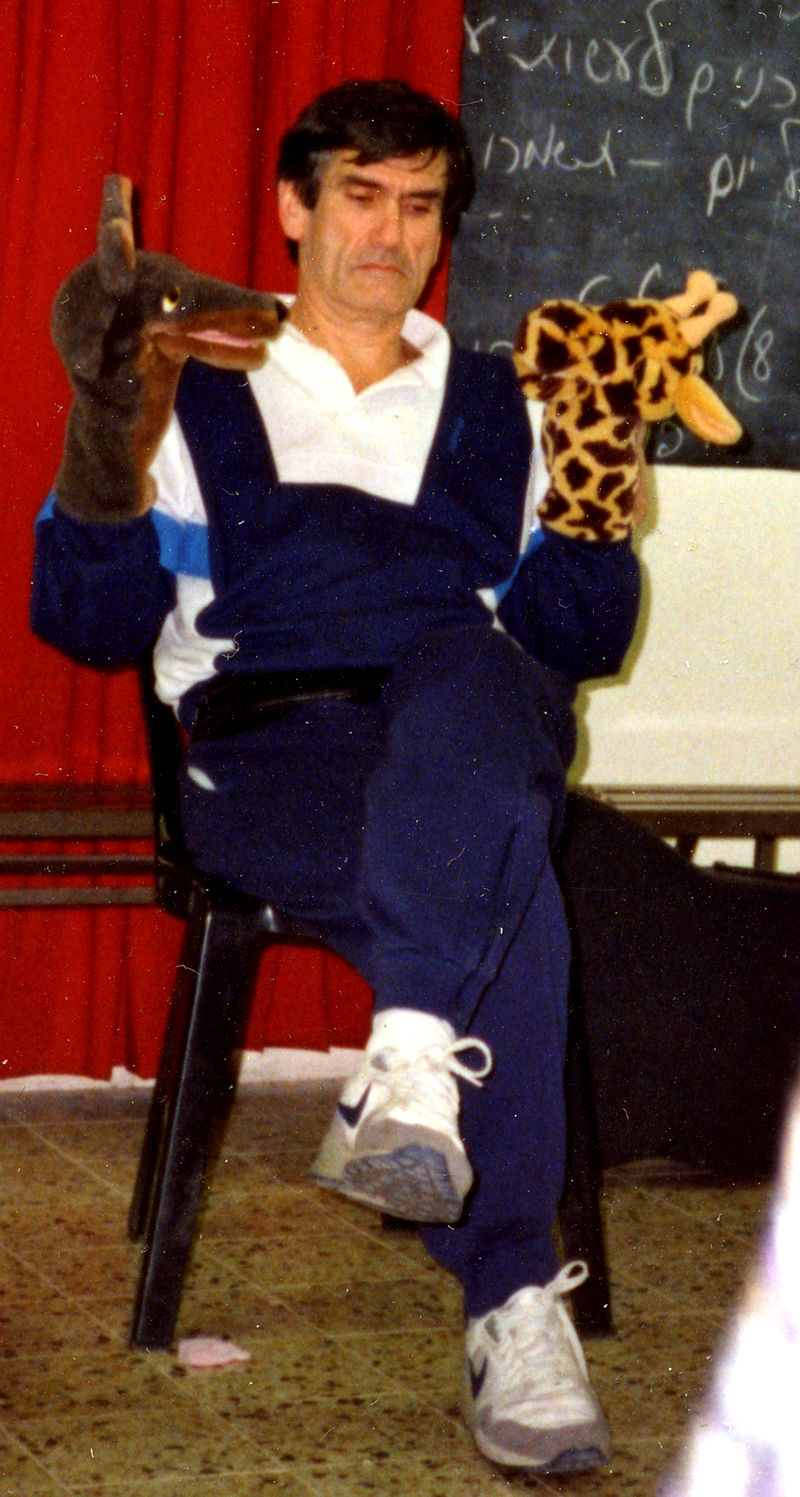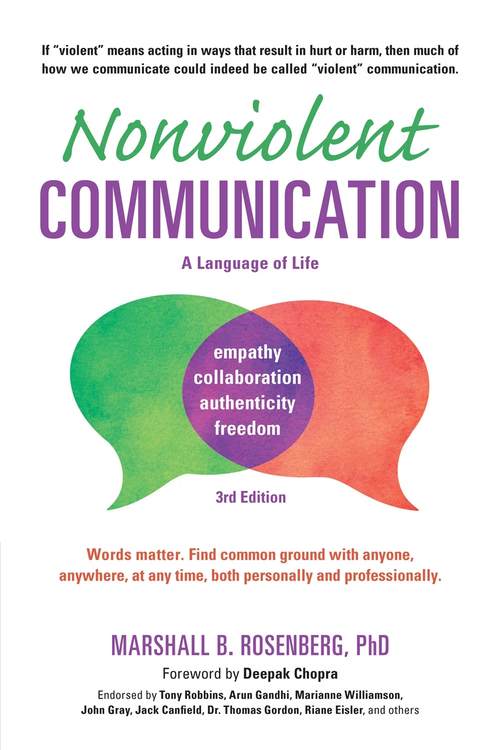Introduction
Nonviolent Communication: A Language of Life by Marshall Rosenberg is a popular book about a communication method that emphasizes empathetic and compassionate interaction between people. It provides a step-by-step framework for applying NVC (Nonviolent Communication) in various situations, from personal relationships to workplace conflicts and even when talking to yourself.
Overview of Nonviolent Communication
Nonviolent Communication (NVC) is based on four principles:
- Observation - Observe without judgment by focusing on the facts of a situation rather than interpreting or evaluating them. By observing without judgment, we can better understand what is happening and communicate more clearly with others.
- Feeling - Identify and express our feelings about our observations. This involves identifying and naming our emotions rather than suppressing or denying them. We can better connect with others and communicate more authentically by expressing our feelings.
- Need - Identify the underlying needs or values driving our feelings. By identifying our needs, we can better understand what we seek or hope to achieve and communicate this clearly and constructively to others.
- Request: The fourth principle of NVC is to make a specific, actionable request connected to our underlying needs. By making a clear request, we can communicate our needs and desires to others in a way that is more likely to be heard and understood.
Key Takeaways
Nonviolent Communication (NVC) can be used in various everyday situations to improve communication, build stronger relationships, and reduce conflict. The author gave compelling examples for:
- Personal relationships - NVC can improve communication and understanding in personal relationships, such as with partners, family members, or friends. By focusing on observation, feelings, needs, and requests, individuals can better express themselves and understand the needs of others, leading to more compassionate and fulfilling relationships.
- The workplace - NVC can be used to improve communication and collaboration in the workplace, such as with colleagues, supervisors, or clients. By using NVC principles, individuals can express their needs and concerns constructively and respectfully, leading to more effective problem-solving and a more positive work environment.
- Self-care - NVC can also be used for self-reflection and self-care. By tuning into our feelings and needs, we can better understand what we need to be happy and fulfilled and make choices aligned with our values and goals.
- Conflict resolution - NVC can be used to reduce conflict and find mutually beneficial solutions in various situations, from personal disagreements in the local community to international conflicts. By focusing on understanding the underlying needs and values of all parties involved, NVC can help to identify common ground and find solutions that work for everyone.
- I liked the author's piece talks anecdotes. Unfortunately, he did not provide examples of conflict resolution in the tech industry. I firmly believe engineers are a special sort of people.

How to implement NVC?
Here are a few tips I have found helpful in implementing NVC.
- Start gradually - try to implement only some things at a time.
- Practice observation - Start by focusing on the facts of a situation without judgment. Notice what you see and hear, and describe it objectively.
- Identify your feelings - Pay attention to how you feel in different situations, and try to name those feelings. Use feeling words like "frustrated," "happy," or "anxious" to describe how you feel.
- Connect to your needs - Once you've identified your feelings, think about the underlying needs or values driving those feelings. Are you feeling anxious because you need security or support? Are you feeling frustrated because you need respect or autonomy?
- Express yourself clearly - Use "I" statements to express your feelings and needs. For example, "I feel frustrated when you interrupt me because I need to be heard and respected."
- Practice active listening - When someone else is speaking, focus on hearing what they're saying without judgment. Reflect on what you've heard to ensure you understand and ask questions to clarify.
- Empathize with others - Try to put yourself in the other person's shoes and understand their feelings and needs. Use reflective listening and ask questions to show that you're trying to understand.
- Practice regularly - NVC is a skill that takes practice. Start with small situations, like conversations with family or friends, and gradually work up to more challenging situations.
Criticisms of NVC
There are a few common criticisms of Nonviolent Communication (NVC).
- Manipulation - One can argue that NVC can be used manipulatively by making it seem like you're trying to connect with them when in reality, you're just trying to get what you want.
- However, one can argue that every communication is just about getting what you want.
- Simplification - Can you reduce complex human interaction to a formulaic four-step process?
- Maybe the logic behind the communication is not the problem, but our emotions get the best of us.
- Unrealistic - Can NVC be used in high-pressure and conflict scenarios with the possibility of violence?
- But most of us do not have to worry about this.
- Power imbalances - Can you use NVC effectively when one person holds more power than the other (such as in a boss-employee or parent-child relationship)? People with less power may not feel safe or comfortable expressing their needs and feelings directly and honestly.
Microsoft and NVC

Famous meme about Leadership styles for large tech companies. Microsoft used to be combative internally.
Satya Nadella, the CEO of Microsoft, has spoken publicly about his admiration for Nonviolent Communication (NVC) and how it has influenced his leadership style. I think he brought Microsoft into the new, more open, and friendly era, especially after Steve Ballmer, famous for his aggressive leadership style.
NVC Community
The Nonviolent Communication (NVC) community is a global network of individuals and organizations committed to practicing and promoting NVC principles. This community includes certified NVC trainers, facilitators, practitioners, and enthusiasts dedicated to fostering more compassionate and empathetic communication in their personal and professional lives.
Personal Reflection
I can relate to the emotions of Microsoft's executives when Satya Nadella was appointed CEO. Similarly, I have been instructed to read Nonviolent Communication.
I am optimistic that I will experience positive and transformative changes like them.
Conclusion
In conclusion, Nonviolent Communication is an intriguing and thought-provoking book that offers valuable insights into improving daily interactions. I am committed to integrating the advice and techniques presented in this book into my everyday communication. Give it a read, and you might just find yourself on a path to better communication as well!
Author
 Marshall with hand puppets. (maybe I could use hand puppets in my scrum meetings?)
Marshall with hand puppets. (maybe I could use hand puppets in my scrum meetings?)
Marshall Rosenberg was an American psychologist, mediator, and educator who developed the NVC approach. Born in 1934, Rosenberg dedicated his life to promoting peace and conflict resolution through effective communication. He earned a Ph.D. in clinical psychology from the University of Wisconsin and went on to work as a mediator for the civil rights movement in the 1960s. Rosenberg passed away in 2015, but his legacy lives on through the countless individuals and organizations that continue to use and promote NVC principles.
